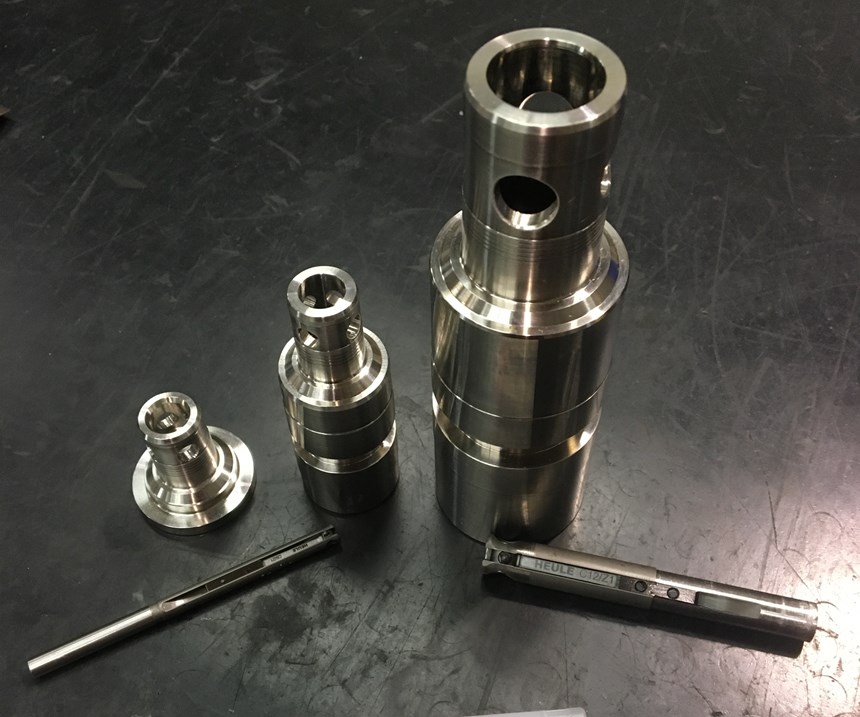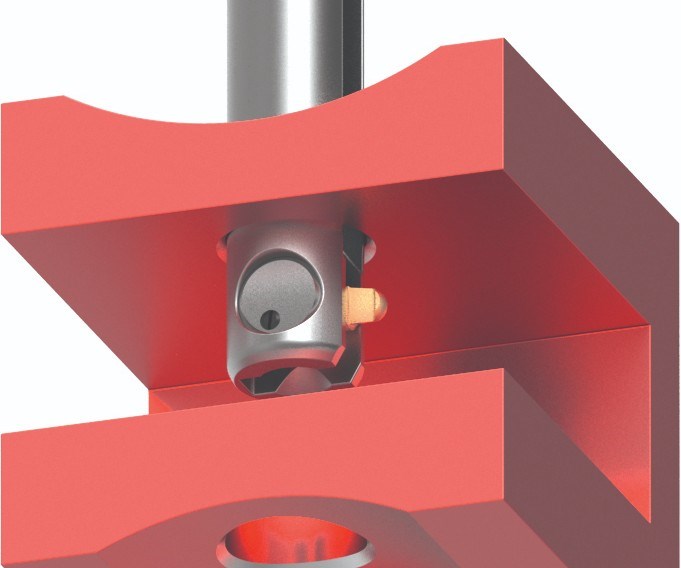Automated Deburring Tool Increases Production of Subsea Valves
Multiple difficult-to-reach holes, each of varying sizes, and of varying quantity depending on the part in question made machining subsea valves at Abco Subsea difficult. But ever since the company found the Cofa C Series tooling from Heule Tool, it has worked flawlessly in the production line.
More than 30 years ago, Abco Subsea (Houston, Texas) patented the first multi-input shuttle valve, a product that is now installed on more than 20 percent of the world’s deepwater drilling fleet. Subsea products must withstand a lifetime of corrosion under the ocean without breaking down. Abco has become one of the largest providers of BOP shuttle valves to the offshore industry with a product that is meticulously manufactured, according to the company, even with increasing demand and production targets.
Producing a product with a lifetime guarantee is no small feat for Jerry Cross, CNC manufacturing manager at Abco Subsea. In 2015, Abco brought production of the hydraulic shuttle valves in house to increase quality and consistency. Originally made of aluminum bronze, the company wanted a new line of valves made of nitronic. Mr. Cross was the point person for setting up a machine shop that would eventually manufacture 2,000 parts a month.
What makes Abco’s multi input shuttle valve (MISV) such a popular product is exactly what makes it difficult to manufacture. The valves, mounted on the blowout preventer, can have multiple inputs for multiple means of control—from the bridge or from a remotely operated underwater vehicle, for example. Each MISV has internal parts that have multiple holes, which Mr. Cross and his team refer to as the spool and the plug. The MISV line has three sizes—½ inch, 1 inch and 1½ inch—and correspondingly, the plug and spool has three hole sizes—¼ inch, ½ inch and ¾ inch—each 90 degrees apart for fluid flow.
Multiple difficult-to-reach holes, each of varying sizes, and of varying quantity depending on the part in question made machining difficult, even for Mr. Cross and his expert team of CNC operators. Drilling happens all in one operation on a lathe by indexing the part with the C axis at 90 degrees and using an end mill to drill the hole.
But the job wasn’t done there. Each tiny hole left material that had to be deburred to ensure the part was on spec. If left on, the burr would break loose and gall or mar the working internal surfaces, reducing the lifetime of the product or preventing a complete seal from forming.
Mr. Cross tried a ceramic deburring tool, which broke apart and sent pieces flying everywhere. He tried having his team deburr manually with a router or die grinder, or using sandpaper, which left his operators worn out and didn’t necessarily guarantee a perfectly deburred chamfer.
The miniscule size of the holes demands particular attention from an operator, and working with their fingers on such a small hole all day can make them sore and raw. Parts come off the line every 15 to 20 minutes, and operators would then spend up to 10 minutes deburring each piece all day long. The process took a toll on the team.
“The guys would not want to come back to work the next day because their fingers and hands were sore from manually deburring these cross-saddle-type holes, top and bottom,” Mr. Cross says.
With quotas that vary from 700-2,500 holes per month, Mr. Cross needed a solution that would get the job done and grind down the part—not his employees.
An internet search for deburring cross-holes led to Heule Tool Corp., a provider of precision automated deburring and drilling tools. Mr. Cross ordered Cofa C series tooling for the ¼-inch, ½-inch and ¾-inch holes. This automated deburring tool is specifically designed for front and back deburring using CNC machinery. After dialoguing with the team at Heule to get the programming right, Mr. Cross put the new deburring tool into the production line, and it has worked flawlessly ever since.
After the end mill, an operator runs the part through with the Cofa, which deburrs both sides of the saddle, ending in a perfectly deburred, clean part. The deburring tool takes the operator’s hands out of the equation, saving five to 10 minutes per part and the operator’s hands from cramping and from long-term damage.
By making the deburr operation a part of the production cycle on the machine, the operator does not have to feel fatigued over the tedious process of manually deburring holes and can focus his energy on ensuring parts meet spec and time requirements. Operators have expressed how happy the Cofa tool makes them when they know how many holes need to be run and deburred since without the new tool they would all have to be done by hand.
“Now our operator can give it a once over and put it in the box,” Mr. Cross says.
The Cofa tool automates the deburring process, removing burrs from the front and back of drilled-through holes. Controlled by a simple spring, the carbide cutting blade follows the contour of the hole’s surface, removing the burs while creating an even tapered corner break. The blade doesn’t cut as it passes through the bore, eliminating the risk of damaging the hole’s surface.
The Cofa tool by Heule Tool shaves off burrs while shaving precious minutes off production time for Mr. Cross’ operators. He can ensure smooth holes while meeting high production demands by automating what was once a painstaking, lengthy process.
Read Next
Emerging Leaders Nominations Now Open
Here’s your chance to highlight a young person in your manufacturing business who is on the path to be a future leader moving your company forward.
Read MoreDo You Have Single Points of Failure?
Plans need to be in place before a catastrophic event occurs.
Read More5 Aspects of PMTS I Appreciate
The three-day edition of the 2025 Precision Machining Technology Show kicks off at the start of April. I’ll be there, and here are some reasons why.
Read More


















.jpg;maxWidth=300;quality=90)






